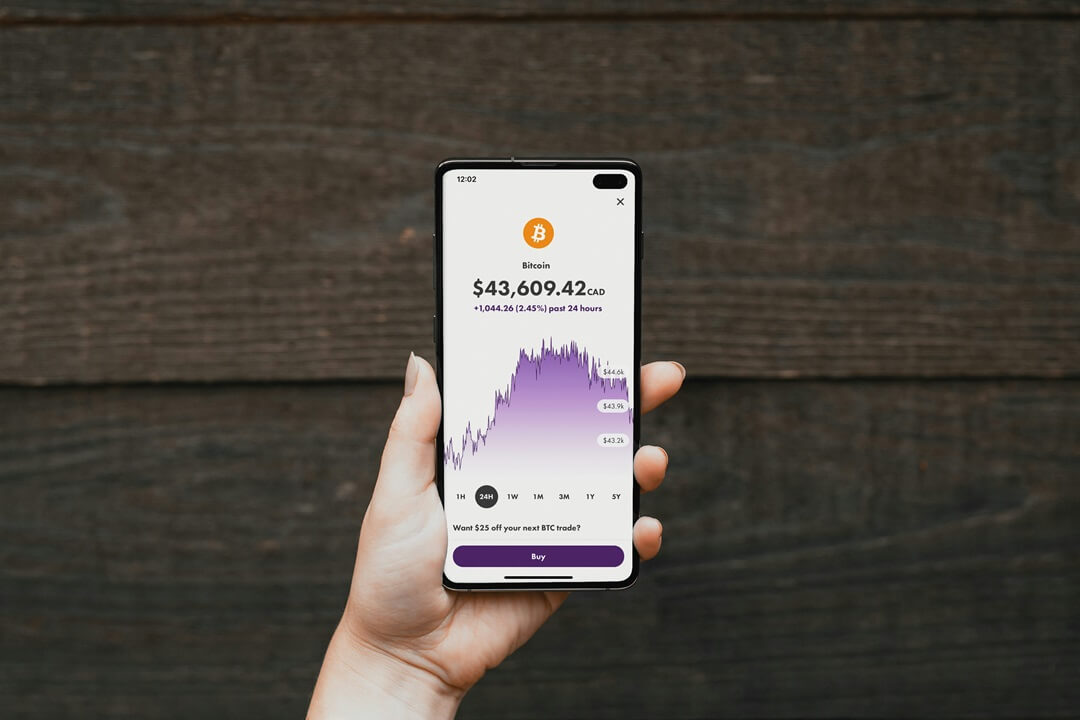How to Buy Bitcoin (BTC): Quick-Start Guide
Many investors start with Bitcoin when they enter the crypto space. Bitcoin has just hit new all-time highs in March 2024 after a long price drop.
If you’re used to traditional financial products, entering the crypto space can feel like uncharted territory. The good news is there are many ways to buy Bitcoin and cryptos, from stockbrokers to exchanges to in-app purchases in some crypto apps.
6 Ways to Buy Bitcoin
Six ways to buy Bitcoin include Bitcoin wallets, centralized cryptocurrency exchanges, some traditional brokers, money transfer apps, Bitcoin ATMs and Bitcoin ETFs. Bitcoin can be traded in fractional shares so you can invest as low as $25.
How to Buy Bitcoin
Exchanges
- Exchanges are where you can buy Bitcoin. Some exchanges offer many cryptos, others only Bitcoin and a few others. Each exchange has different fees and consumer protection so do your research before choosing one. Popular exchanges include Gemini, Kraken, Coinbase and Crypto.com. These platforms offer spot trading, margin trading and staking for different levels of investors and needs.
Traditional Brokers
- While traditional brokers offering Bitcoin trading are still few, Robinhood was the first mainstream investment broker to offer fee free Bitcoin trading (although not available in all US states). Robinhood’s platform is user friendly so perfect for new investors. Other brokers that offer Bitcoin are Webull, TradeStation and Fidelity. These platforms integrate Bitcoin trading into their existing infrastructure so you can manage traditional and crypto investments in one account.
Bitcoin ATMs
- Bitcoin ATMs work like regular ATMs but you can buy and sell Bitcoin. ATMs are often located in convenience stores and other easily accessible places. Before using a Bitcoin ATM, check the fees for the transaction, . Also plan where you will send the Bitcoin you buy, as some ATMs require a Bitcoin wallet address.
Bitcoin Exchange-Traded Funds (ETFs)
- On January 10, 2024 the Securities and Exchange Commission (SEC) approved the first spot Bitcoin ETFs which track the price of Bitcoin and trade on major exchanges. This was a big deal as now traditional investors can get exposure to Bitcoin. Spot Bitcoin ETFs started trading on January 11, 2024 and are available through traditional brokerage accounts. These ETFs are a familiar investment vehicle for those who want to invest in Bitcoin without actually owning the crypto.
Peer-to-Peer Money Transfer Apps
- Apps like PayPal, Venmo and Cash App allow you to buy, store, send and sell Bitcoin within the app. These services are convenient for those already using these platforms. They offer an integrated experience, combining traditional money transfer with crypto transactions. You can switch between sending money to friends and buying Bitcoin.
Wallet Software
- Some apps, including games, crypto wallets and other blockchain based services allow you to buy and sell digital assets within the app. Third party services like MoonPay facilitate these transactions, often at a higher cost but with the benefit of fast and easy processing. These apps often have additional features like portfolio tracking, price alerts and educational resources to help you manage your investments.
How to Store the Bitcoin You Buy
Once you buy Bitcoin you need to store it safely, usually in a digital wallet. There are two types of wallets: hot wallets and cold wallets.
Hot Wallet
A hot wallet stores Bitcoin online through a trusted exchange or provider. These wallets are accessible through an app or browser, making them great for frequent transactions. But hot wallets are more vulnerable to hacking and online threats. Many users prefer third party hot wallets for extra security. These wallets are often free to download and use and have features like multi-signature support and hardware wallet integration.
Cold Wallet
A cold wallet is an encrypted portable device that stores Bitcoin offline, making it much more secure than a hot wallet. Cold wallets are relatively cheap, often under $100. They are great for long term storage and large amounts of Bitcoin. Examples of cold wallets are hardware wallets like Ledger and Trezor which have robust security features like PIN protection and recovery seed phrases.
When creating accounts for digital wallets and exchanges use strong passwords and two-factor authentication to secure yourself. Update your security practices regularly to protect your investments.
What to Do with the Bitcoin You Buy
Bitcoin can be an investment and a medium of exchange. You can choose to spend, trade, or hold your Bitcoin depending on your financial goals and market outlook.
- Spending Bitcoin
- Bitcoin can be used as a payment method at various retailers and digital services. More and more businesses accept Bitcoin so you can use it for everyday purchases or online transactions. Websites like Overstock, Newegg, and various travel booking platforms accept Bitcoin, expanding its use case beyond investment.
- Investing in Bitcoin
- If you see Bitcoin as an investment you need to decide what kind of investor you want to be. Day trading involves frequent buying and selling to profit from short-term price movements. This is risky and requires a deep understanding of market trends and technical analysis. Long-term investing, often called “HODLing” involves buying Bitcoin and holding it for a long time, betting on its value to increase over time.
Whatever your investment approach, stay up to date with market trends, regulatory changes, and technology in the crypto space. And be aware of the tax implications of owning Bitcoin. In many countries, Bitcoin is a taxable asset and you may need to report gains and losses


